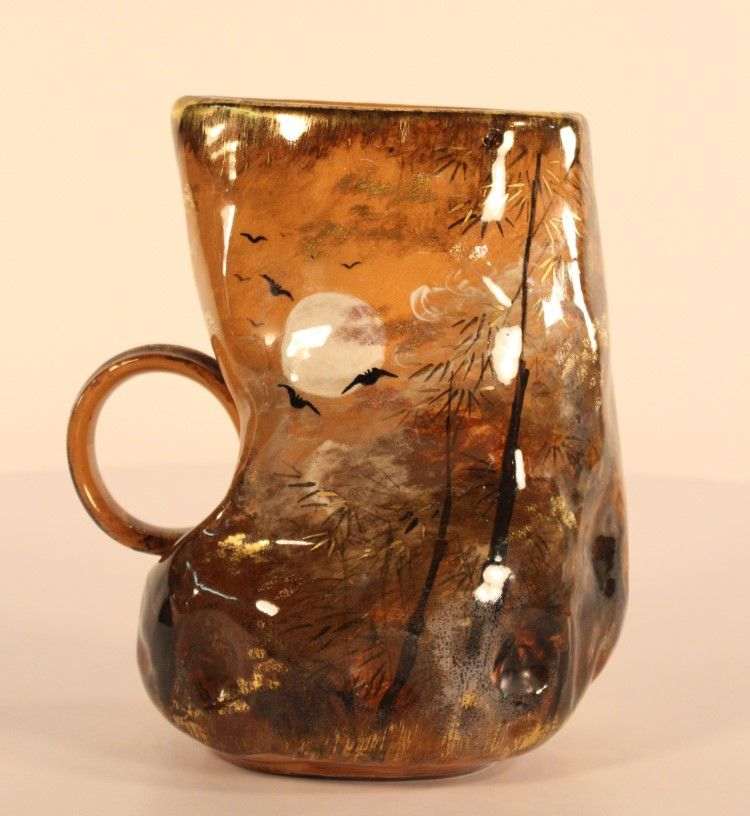Born into the wealthy Longworth family of Cincinnati, Ohio, Maria Longworth Nichols (1849-1932) used her family money to found one of the most successful art potteries in the United States. Nichols’ interest in ceramics began with learning how to paint on china, a pastime—and ultimately a livelihood—that became popular for women in the United States in the second half of the nineteenth century. Nichols first learned china painting in 1873 from Karl Langenbeck, a ceramic chemist, and expanded her skills in classes taught by Benn Pittman at the Cincinnati School of Design. In 1876, Nichols, along with several other china painters from Cincinnati, displayed her work at the Philadelphia Centennial Exposition, the first World’s Fair held in the United States. At the Fair, she saw displays of French underglaze painted ceramics (known as French barbotine) and Japanese ceramics, both of which made an indelible impression on her. Nichols returned home to Cincinnati and began to experiment with underglaze techniques, a more technically advanced and difficult process that involved painting on an unfired vessel and glazing after the decoration was complete. In the summer of 1880, determined to make her mark on the Cincinnati pottery scene, Nichols founded Rookwood Pottery. She named the company after her childhood home and based it in a former schoolhouse purchased by her father. Cincinnati was already home to a number of commercial potteries, as well as growing numbers of women interested in and experienced with china painting, and Nichols hired employees from both groups to work at Rookwood. In its early years, Rookwood produced an assortment of experimental vessels, sometimes awkward in shape and decorated to the point of what some might consider gaudiness. Pitcher with Dragonfly is one of four forms Nichols designed directly inspired by pottery made by French artist and designer Émile Gallé, whose work she admired and encountered for sale in Cincinnati stores. The pitcher is shape 115 in the Rookwood Pottery shape book, a record kept by the company that documented each form made, as well as a plethora of other information, including inspirations for shapes, fabrication methods, sizes, and sometimes even who purchased the work. Pitcher with Dragonfly was cast from a mold and then Nichols decorated the vessel by hand. Pitcher with Dragonfly is currently on view in Renegades and Reformers: American Art Pottery.
-Steffi Chappell, Assistant Curator
Sources: Barbara Perry, American Art Pottery from the Collection of the Everson Museum of Art, New York, NY: Harry N. Abrams, 1997, 24-32. Kenneth R. Trapp, Rookwood Pottery: The Glorious Gamble, New York, NY: Rizzoli International Publications, Inc. and Cincinnati Art Museum, 1992, 11-16. Alice Cooney Frelinghuysen, Martin Eidelberg, and Adrienne Spinozzi, American Art Pottery: The Robert A. Ellison Jr. Collection, New York, NY: The Metropolitan Museum of Art, 2018, 75-77.


